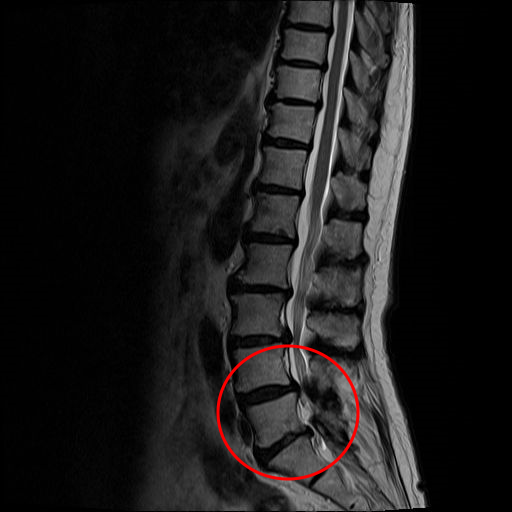Column Spinal Canal Stenosis and Spondylolisthesis: How to Tell Apart Those Two Lower Back Conditions?
December 15, 2023
There are a variety of spinal disorders, including herniated discs, spinal canal stenosis, or spondylolisthesis. Some of these conditions exhibit very similar symptoms. One example is spinal canal stenosis and spondylolisthesis.
In this article, we will discuss the main differences between scoliosis and spondylolisthesis.
What are scoliosis and spondylolisthesis?
Spinal canal stenosis and spondylolisthesis are the most common conditions, along with disc herniation, according to the Spine Surgery Survey Report of the Japanese Society for Spine and Spinal Cord Diseases published in 2004. *1
*1: Yutaka Nohara et al., “Nationwide survey on complications of spine surgery in Japan” Journal of the Japanese Society for Spine Surgery and Related Research, 15 (2), 2004.
日本脊椎脊髄病学会脊椎手術調査報告 (in Japanese)
Nationwide_survey_on_complications_of_spine_surgery_in_Japan (in English)
Spinal canal stenosis
Spinal canal stenosis is a narrowing of the nerve passageway (= spinal canal) in the spine.
There are 3 main types of spinal stenosis, depending on the nerve being compressed: cauda equina (when the cauda equina nerve, a bundle of nerves extending downward from the lower end of the spinal cord, is compressed), nerve root (when the root of the nerve that branches off from the cauda equina and exits between the spine is compressed) and mixed type (when the cauda equina and nerve root conditions are combined).

Spondylolisthesis
Spondylolisthesis occurs when a vertebra shifts from its normal position in the lumbar region.
There are two types of lumbar spondylolisthesis: degenerative spondylolisthesis and spondylolisthesis with spondylolisthesis, as well as dysplastic spondylolisthesis that develop due to congenital factors.

Symptoms of stenosis and spondylolisthesis
Symptoms of stenosis
Symptoms of scoliosis include numbness and lethargy in both legs, pain and tingling in the buttocks, and abnormal sensations as a result of nerve compression. If the condition worsens, urinary and stool disorders may also appear.
Another characteristic symptom of lumbar spinal stenosis is intermittent claudication. Intermittent claudication is a condition in which the patient feels pain or numbness in the legs when walking and cannot walk, and after a short rest, the patient feels relief and can walk again, but after a while, the pain returns.
Symptoms of spondylolisthesis
Mild lumbar spondylolisthesis is often asymptomatic. Therefore, it is not uncommon for symptoms to develop and then to be examined, only to discover that the lumbar spondylolisthesis has progressed.
One of the most common symptoms of spondylolisthesis is numbness/pain in the buttocks and lower extremities that appears while walking. Intermittent claudication, which allows the patient to walk again after a short break, is common.
Degenerative spondylolisthesis is often accompanied by spinal stenosis and symptoms of spinal stenosis.
Causes of stenosis and spondylolisthesis
The main cause of spinal canal stenosis and spondylolisthesis is age-related degeneration and deformation of bones, ligaments, and intervertebral discs.
Recent research indicates that the cause of spinal canal stenosis and spondylolisthesis is intervertebral disc degeneration. *2
*2: Dell R. Burkey. Regional Anesthesia and Pain Management. Saunders, 2009. I. Akkawi, H. Zmerly. Degenerative Spondylolisthesis: A Narrative Review. Acta Biomedica, vol. 92, No.6, 2021.
Effects of Intervertebral Disc Degeneration
Degeneration of the intervertebral disc begins when the disc is unable to maintain its original shape due to injury or other causes, resulting in a loss of disc function and the appearance of symptoms such as back pain. This is called disc degeneration.
As the degeneration progresses, the nucleus pulposus protrudes through a crack in the annulus fibrosus, resulting in a herniated disc, and the spinal canal is compressed by the herniated disc, resulting in spinal canal stenosis.
The more the disc degeneration progresses, the more water in the disc is lost, and the thinner and collapsed the disc becomes.
As this occurs, the vertebrae tend to clash with each other, causing deformation of the vertebrae themselves and instability of the spine, which may lead to misalignment (spondylolisthesis).

Our Treatment – the Cellgel Method
As mentioned above, the cause of spinal canal stenosis and spondylolisthesis is disc degeneration.
Therefore, we believe that the degenerated intervertebral discs must be repaired so as to provide a fundamental cure.
At our clinic, we perform the Cellgel method for spinal canal stenosis and spondylolisthesis caused by degenerated intervertebral discs.
In our Cellgel method, we inject a drug that fills in the cracks in the disc, which then becomes a gel and replaces the cracks, thus providing a fundamental treatment. It is characterized by the fact that the volume of the disc is not reduced, and the drug remains in the disc as a gel implant after treatment, thus preserving the disc.
Unlike conventional surgery, the Cellgel procedure does not involve incisions, so there are fewer postoperative risks.
The hospitalization period is only half a day, and you can walk home on the same day of treatment.
If you suffer from back pain or have been diagnosed with spinal stenosis or spondylolisthesis, please consider having a consultation at our clinic.
Related Articles
The Different Symptoms of Spinal Canal Stenosis: If You Have Any of These, It’s a Red Flag!
Could you suffer from spondylolisthesis? How to check for symptoms easily.
What causes lumbar spondylolisthesis? People who live like this should be careful!



